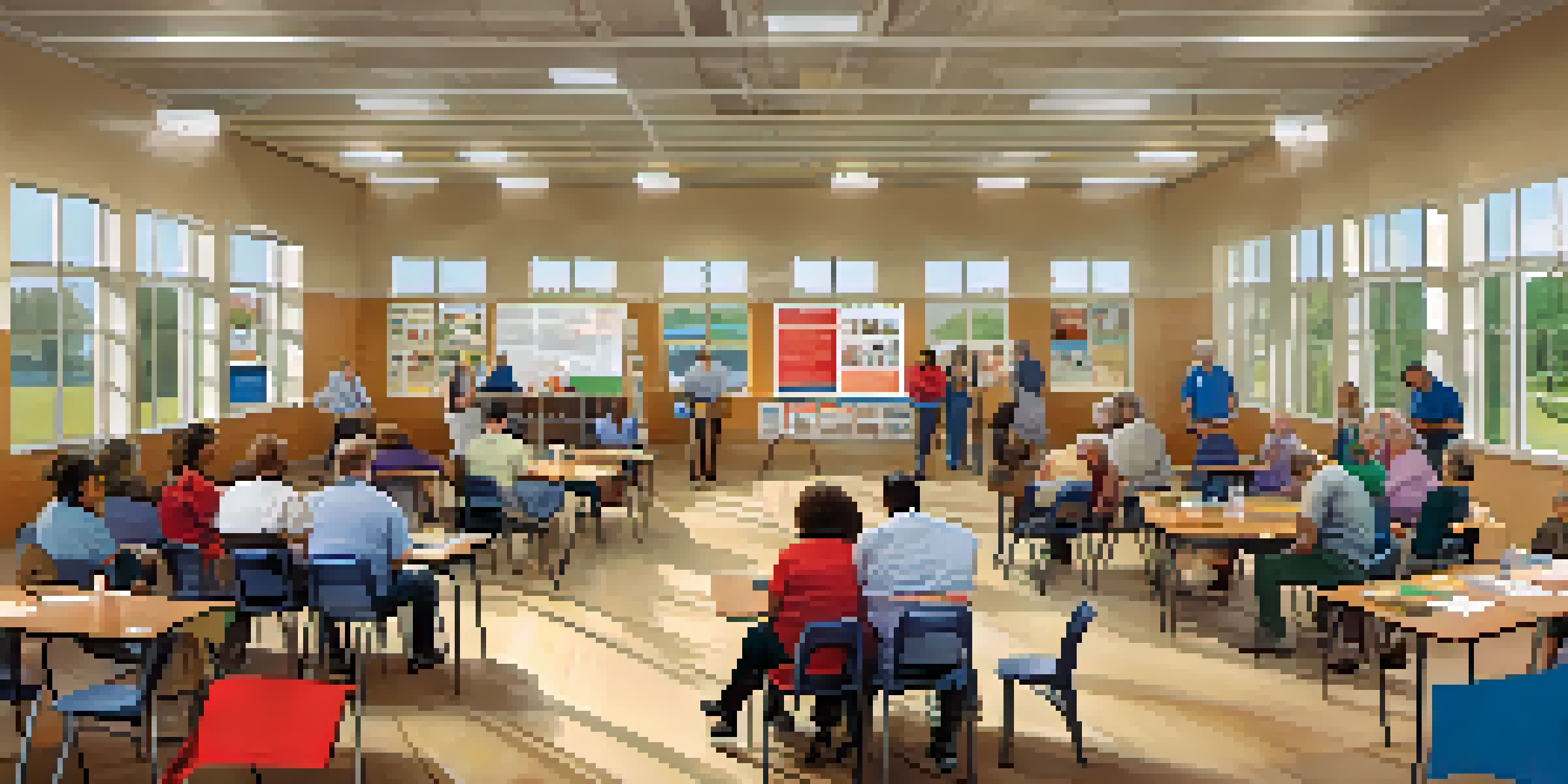Arizona's Emergency Management Agencies: Key Functions Explained

Overview of Arizona's Emergency Management Framework
Arizona's emergency management framework is designed to protect its residents during disasters. The framework includes various agencies that work together to prepare, respond, recover, and mitigate the effects of emergencies. This collaborative approach ensures that resources are effectively utilized, and communities are well-prepared for any unforeseen events.
An ounce of prevention is worth a pound of cure.
At the heart of this framework is the Arizona Division of Emergency Management (ADEM), which coordinates efforts among local, state, and federal agencies. ADEM plays a pivotal role in ensuring that all parties are aligned in their response strategies and resource allocation. This collaboration fosters a sense of unity and readiness across the state.
In addition to ADEM, local emergency management offices contribute significantly by tailoring responses to their specific communities. Their on-the-ground knowledge is invaluable in creating effective preparedness plans that resonate with residents, ensuring everyone knows how to act in an emergency.
Key Functions of Emergency Management Agencies
Arizona's emergency management agencies serve several key functions essential for public safety. These functions include planning and preparedness, response coordination, recovery efforts, and mitigation strategies. Each function is interconnected, allowing agencies to respond effectively to a crisis while also building resilience against future emergencies.

Planning and preparedness involve creating comprehensive plans, training exercises, and public education initiatives. These efforts aim to equip communities with the knowledge and tools they need to handle emergencies. When residents are aware of potential threats and know how to react, the overall response is smoother and more effective.
Collaborative Emergency Framework
Arizona's emergency management framework fosters collaboration among various agencies to ensure effective preparedness and response during disasters.
Response coordination is crucial during an emergency, as agencies must work quickly and efficiently to provide aid. This involves mobilizing resources, coordinating with first responders, and communicating with the public. The ability to seamlessly transition from planning to action can be the difference between chaos and effective crisis management.
The Role of Community Engagement in Emergency Management
Community engagement plays a vital role in effective emergency management. Agencies strive to involve local residents in preparedness efforts, recognizing that they are the first line of defense during a disaster. Engaged communities can respond more quickly and effectively, reducing the impact of emergencies.
In the midst of chaos, there is also opportunity.
Programs such as community workshops, disaster drills, and informational campaigns help raise awareness and educate residents on emergency preparedness. When individuals understand the risks specific to their area and know how to react, they become empowered participants in the emergency management process. This grassroots involvement builds a culture of preparedness.
Moreover, feedback from the community helps agencies refine their strategies and improve their response plans. Listening to residents' concerns and experiences allows agencies to identify gaps and enhance their services. This two-way communication fosters trust and a sense of partnership between agencies and the communities they serve.
Training and Exercises for Emergency Response
Training and exercises are essential components of Arizona's emergency management efforts. Agencies conduct regular drills and simulations to prepare personnel for various disaster scenarios. These exercises help ensure that everyone knows their role and can act quickly and effectively when real emergencies arise.
Collaboration between different agencies during training exercises is crucial. By working together, agencies can identify strengths and weaknesses in their response plans, enhancing overall disaster preparedness. This practice also builds relationships among responders, improving communication during actual events.
Community Engagement is Key
Involving local residents in emergency preparedness efforts enhances community resilience and enables faster responses to disasters.
Additionally, training isn't limited to agency personnel; community members are often invited to participate. This inclusive approach helps residents understand emergency protocols and fosters a greater sense of readiness, ensuring that everyone is on the same page when disaster strikes.
Disaster Recovery: Steps and Support Systems
Disaster recovery is a critical function of Arizona's emergency management agencies. After an event, these agencies work tirelessly to assist affected communities in rebuilding and recovering. This process involves assessing damage, distributing resources, and providing support to those in need.
One key aspect of recovery is connecting residents with various assistance programs. Agencies collaborate with non-profit organizations, local governments, and federal resources to ensure that individuals receive the help they need. This comprehensive support network plays a vital role in addressing the multifaceted challenges that arise after a disaster.
Moreover, recovery efforts focus on long-term resilience, not just immediate relief. Agencies strive to create strategies that improve infrastructure and community preparedness for future events. This forward-thinking approach ensures that communities emerge stronger and more resilient after facing adversity.
Mitigation Strategies: Reducing Risks Before They Occur
Mitigation strategies are proactive measures designed to reduce the risks associated with emergencies before they occur. Arizona's emergency management agencies emphasize the importance of identifying vulnerabilities and implementing solutions to minimize potential impacts. This preventive approach can save lives and resources.
Examples of mitigation efforts include improving building codes, enhancing infrastructure, and implementing land-use planning. By addressing potential hazards at their source, agencies can significantly reduce the likelihood and severity of disasters. This forward-thinking mindset is essential for creating safer communities.
Proactive Mitigation Strategies
Implementing proactive mitigation strategies helps reduce risks and vulnerabilities associated with potential emergencies in Arizona.
Community involvement is crucial in the mitigation process as well. Engaging residents in discussions about risks and potential solutions fosters a sense of ownership and responsibility. When individuals contribute to mitigation efforts, they become advocates for their safety and the well-being of their communities.
The Future of Emergency Management in Arizona
The future of emergency management in Arizona looks promising as agencies continue to adapt to evolving challenges. With climate change and increasing population density, the need for effective emergency management is more critical than ever. Agencies are focusing on innovative solutions to enhance their preparedness and response capabilities.
Technology plays a significant role in shaping the future of emergency management. From advanced communication systems to data analytics, agencies are leveraging technology to improve situational awareness and decision-making processes. This tech-savvy approach enables a more efficient response to disasters as they unfold.

Furthermore, collaboration with academic institutions and private sectors is expected to grow. By harnessing diverse expertise and resources, agencies can develop more comprehensive strategies and solutions. This collaborative spirit will ensure that Arizona remains resilient in the face of future challenges, safeguarding its communities.